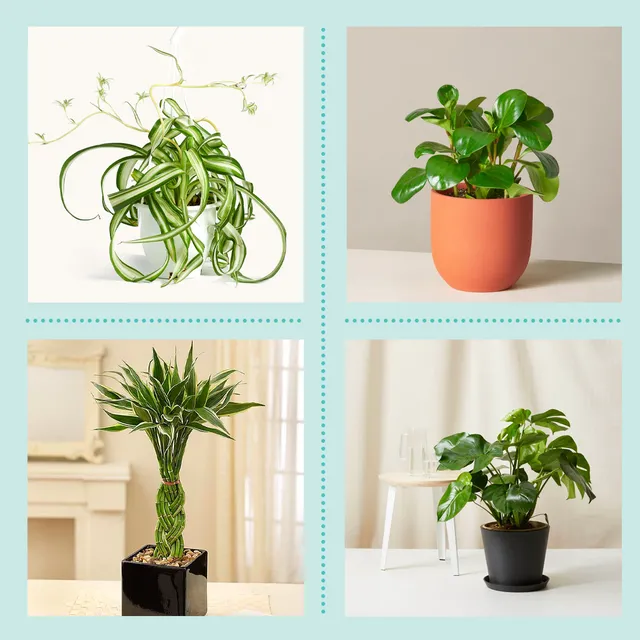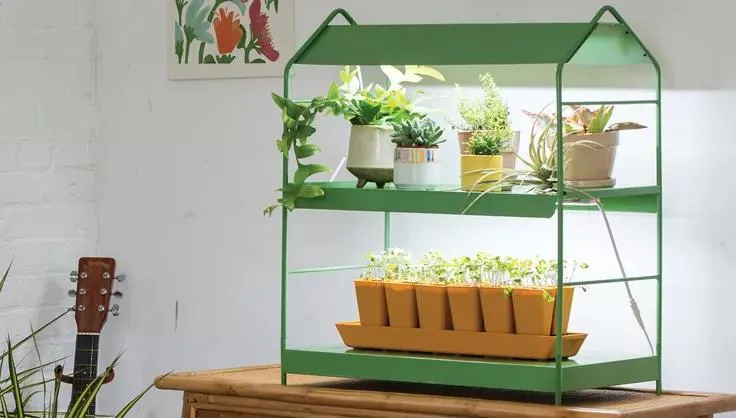A Beginner’s Guide to Choosing and Caring for Small Tabletop Plants
If you’re looking to brighten up your indoor space but don’t have a lot of room, small tabletop plants are a great option. But with so many varieties to choose from, it can feel intimidating deciding which plants are best for your needs and lifestyle. In this guide, I’ll cover the top plant types suitable for tables and desks, explain how to care for them, and address common questions new plant parents have. By the end, you’ll be confident picking out low-maintenance indoor plants that will thrive on your windowsill.
Popular Small Plant Varieties
Here are some of the most popular and foolproof small plant varieties suitable for tables and desks:
- Succulents: Succulents like echeveria, haworthia, and sedum are very trendy right now for their easy care. They store water in thick leaves or stems, so they can go longer between waterings than other plants.
- Pothos: With their heart-shaped leaves and trailing vines, pothos are one of the best choices for beginners. In my experience, they’re very hardy and tolerate low light levels well.
- Spider plant: With long grass-like leaves and small white flowers that produce plantlets, spider plants are low maintenance and great for brightening up a workspace. The plantlets are also easy to propagate into new plants.
- Snake plant: Snake plants are practically immortal—I’ve seen them survive extreme neglect! Their stiff, strappy leaves make them a nice bold accent for tables. They’re super tough and can go weeks without water.
- Chinese evergreen: Chinese evergreens come in charming small-leaf varieties perfect for tables. While they enjoy medium to bright indirect light, they’ll reward you with colorful foliage in shades of green, pink, and white all year long with just occasional watering.
These are all good options for low-light situations common on desk tops. Try starting with one or two easy plants to get the hang of it before expanding your collection.
Tips for Choosing a Spot
When picking a spot for your new tabletop plants, consider these factors:

- Light: Most small indoor plants do best in medium to low light, so make sure the spot gets indirect sunlight from an east or west-facing window to avoid sunburn.
- Access to water: Choose a place near a sink for easy regular watering. Alternatively, pick a spot that won’t be damaged if you bring a watering can.
- Safety: If placing plants where kids or pets can reach, pick non-toxic species. Also make sure pots won’t accidentally get knocked or pulled over.
- Aesthetics: Go for a spot that will showcase your new plants and make a statement! Tables, desks, and bookshelves work well.
Trust your gut—if an area feels right, it probably is. Just keep the plant’s needs in mind as you decide where to set it up for success.
Caring for Tabletop Plants
Once you’ve chosen your plant and spot, here are the basics of care:
- Watering: Feel the soil before watering—only water when it’s dry 1-2 inches deep. Overwatering is a common cause of plant demise! I usually water my pilea peperomioides once every 7-10 days.
- Fertilizing: Use a diluted liquid houseplant fertilizer every few months in the spring and summer. It gives them a boost as the growing seasons change.
- Replanting: When roots start to grow out the drainage holes, it’s time to replant in a slightly larger pot using a well-draining potting mix. This usually happens every 1-3 years.
- Pruning: Remove any spent or damaged leaves or stems as needed to keep plants looking tidy. Succulents especially may need occasional beheading to stay compact.
- Dusting: Wipe leaves occasionally with a damp cloth to remove dust that can block sunlight absorption. Cleaner plants=healthier plants!
Beyond that, just give them a little TLC and they’ll reward you with fresh foliage. Trust that less is more—avoid overwatering or fussing.
Dealing with Pests and Problems
While tabletop plants are generally lower-maintenance, a few potential issues can crop up. Here are somecommon problems and solutions:

- Mealybugs: Fluffy white insects that suck sap. Wipe leaves with isopropyl alcohol on a cotton ball or treat with neem oil. Isolate any infested plants.
- Spider mites: Tiny red pests that spin webs. Wash leaves thoroughly with water or spray with insecticidal soap. Keep humidity over 50% to deter.
- Overwatering: Yellowing soggy soil means roots are drowning—let soil dry out completely before watering again. It’s always better to underwater than overwater!
- Underwatering: Dry crispy leaves signal thirst— water thoroughly until water drains from the holes. Succulents and snake plants can handle very dry soil between waterings.
With some basic TLC and by addressing problems early, you can keep your tabletop plants fresh and healthy for many months or years to come.
Frequently Asked Questions
Here are answers to some common questions from new plant parents:
- How often should I water? Watering frequency depends on the plant and season, but usually aim to water when the top 1-2 inches of soil are dry. Feel the soil before watering to be sure.
- What if my plant gets leggy? Give it more sunlight if possible, and pinch or trim stems to encourage bushier growth. Pothos especially will vine indefinitely without pruning.
- Is it ok if I forget to water one week? Most tabletop plants can tolerate occasional dry spells, especially succulents and snake plants. Just water thoroughly when you remember! Just don’t make a habit of it.
- How do I know if my plant needs fertilizer? Fertilize approx. every 3 months in spring/summer when plants are actively growing. Signs of need include sparse growth, yellowed leaves, or when you repot.
- Can I grow plants from cuttings? Yes, many common houseplants like pothos, spider plant, and trader joes can be propagated from stem or leaf cuttings. Look up specifics for your variety online.
With a little experience, caring for small indoor plants will become second nature. Enjoy watching your tabletop garden flourish!
I hope this guide has helped answer your questions and given you confidence in selecting tabletop plants that match your space and lifestyle. Feel free to experiment as your plant knowledge grows. Choosing the right plants and providing optimal care will ensure your indoor oasis stays fresh for many months of enjoyment.

Top Houseplants For Any Space
| Plant | Size | Light Needs | Care Level |
|---|---|---|---|
| Pothos | Small to medium | Low to bright indirect | Low, infrequent watering |
| Snake plant | Tall and narrow | Low to bright indirect | Very low, tolerate dry soil |
| ZZ plant | Medium | Low to medium indirect | Low, tolerate dry soil |
| Peace lily | Medium | Medium to bright indirect | Low, let soil dry slightly between watering |
| Chinese evergreen | Small to medium | Medium indirect | Low, let soil dry slightly between watering |
| Philodendron | Vining or bushy | Low to bright indirect | Low, tolerate dry soil |
FAQ
-
What sorts of small plants are ideal for a tabletop?
Many people like to use plants that don’t need much space, such as succulents, air plants, or compact houseplants. Succulents are pretty low maintenance and come in a wide range of shapes and colors. Air plants are awesome too because they don’t even need soil – you just mist them with water!
-
Do tabletop plants need sunlight?
While some plants can tolerate low light, most small plants will do better if they get a few hours of sunlight every day. It’s important to put them in a spot near a window that gets direct or bright indirect light. Otherwise they may not grow well or could become leggy. Maybe put them on a south or east facing windowsill to be safe.
-
How often should I water small plants?
The frequency of watering depends on the type of plant and conditions. In general, succulents only need water once every 1-2 weeks, whereas other types may need water every 5-7 days. The best way to tell is by checking the soil – water when the top inch or so gets dry. Using a moisture meter is handy too. You don’t wanna overwater, as that can cause root rot.
-
What’s the best potting mix for tabletop plants?
Most folks go with a lightweight, well-draining potting soil that won’t get soggy. Potting mixes for cacti and succulents work great since they contain lots of perlite or vermiculite for aeration. You can also use a regular houseplant mix but add extra perlite or sand to improve drainage. Does anyone have brand recommendations for good potting mixes? I’d be curious to hear others’ opinions!

-
How do I care for succulents as tabletop plants?
Succulents are awesome for tables since they’re low maintenance. Give them sunshine and only water when the soil is dry. In the winter, they may go dormant – back off on water and don’t worry if they appear to sleep for a bit. Once spring hits, they’ll perk right up again. Succulents are stunning plants that make caring for them a breeze!
-
What if my tabletop plant isn’t doing well?
If a plant starts to look poorly, check for signs of over- or underwatering like mushy stems or dried leaves. Move it to a spot with more or less light as needed. You can also try repotting it in fresh soil in case the roots are cramped or the dirt is spent. Sometimes laying off fertilizer can help as well. On the chance it has pests, treat with neem oil or insecticidal soap. Hopefully with some TLC, the little guy will bounce back!
-
Are expensive plants necessary for tables?
Definitely not! You can find lovely small plants very reasonably priced. Keep an eye out at local nurseries, big box stores, or online for sales. Propagating from cuttings you already have is another budget-friendly way to get new plants. Basically, with so many attractive options, fancy or pricey plants aren’t required to spruce up tabletops. With a bit of looking, affordable plants can add charm too.
